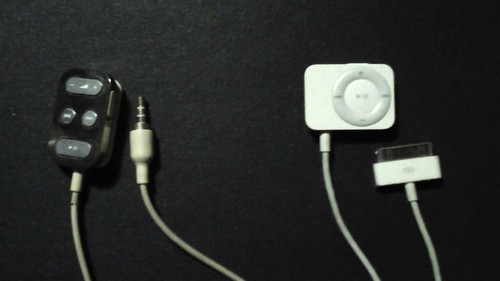In the first three months of this year, I’ve downloaded 2927 free songs. That’s not including the recent label samplers from the Amazon MP3 Store, nor the thousand-song influx that is the SXSW 2009 torrents.
From this, I estimate that I will download over 11,000 songs in this year alone.
My library right now, including everything I’ve ever bought, is 10,626 songs. Subtracting the 2927 mentioned above, I have 7699 songs that I didn’t get this year, or didn’t get for free. This means that this year’s free music will have multiplied the size of my library by about 250%.
I say this not to brag, but because my mind is blown. I’m going to more than double my library this year, for free. Legally. Without pirating a single song.
Wow.
There’s no reason for anyone to pirate music anymore. Music DRM is dead, so the “moral” argument is gone, and you can get as much music as you can listen to without having to spend one red cent. If you have a specific song in mind, you usually can buy it from iTunes or Amazon—and if you don’t have the money to do that, why are you pirating music instead of looking for a job?
I do worry that this could backfire on artists. I barely have enough time to listen to everything I get for free, so I never listen to the rest of the songs on the album, which means I never buy the album. If enough people did what I do, the music economy would collapse.
You might say “why not just donate money to the artists?”. The main reason is, again, my limited time. Getting, tagging, and listening to all this free music takes up more spare time than I’d like already; now you’re proposing that I spend more time just to spend some money. I don’t feel guilty enough.
Two other reasons are that I don’t like donating money in exchange for nothing (the song was free), nor paying for things I already have. I’d rather buy the album, because then, I’m buying something I don’t already have.
Radio Paradise works well here. I hear songs that I like and must buy to have, and I buy them. This way actually makes money for artists.
But Radio Paradise isn’t perfect. The main problem, yet again, is that time issue: I no longer have much time at my computer when I’m not listening to fresh free music, and when such time does arrive, I usually use it to listen to what I already have (a rare break from the endless stream of new stuff). Radio Paradise loses badly in my schedule.
I take comfort in the possibility that I’m an outlier: the only one actually gathering as many of these songs as I do, while everyone else is content to only tap a few sources (e.g., iTunes + Amazon) and make up the rest with purchases. The artists get their due compensation, and I get my free music.
Still, I can’t shake the feeling that there must be some better way.
Here’s something an artist could try: Set up a combination player and online store on your website. Let me listen to the entire album for free. Let me download any, say, two songs for free. If I want more than that, I have to pony up for the whole thing.
Another way would be something more like iTunes and Amazon, but with a much longer preview—let’s say half the song. I don’t know about you, but I find 30 seconds useless. With half-song previews, I could get a good sense of the song and whether I want it in my library, but it wouldn’t be worth just downloading the preview and adding that, since it’s only half the song.
The problem with both these solutions is that they, too, compete for time. I’m not sure I’d find it worth it for one artist. Perhaps a record label or independent online music store (like Insound) would be willing to try it.
The best solution I can think of would combine one of the above solutions with a streaming internet-radio player. I could open a browser window (or SSB) upon the player, and leave it running in the background. If I hear something I like, I could bookmark it, so that I could come back to it later to listen to it again, listen to the album (the whole thing, straight through), buy the song, buy the album, recommend the song on Twitter, or dismiss it.
What do you think? Am I inadvertently screwing over artists in these ideas? Should I stop looking the gift horses in the mouth and just take my free music? Are there better solutions than what I’ve suggested?
UPDATE 12:07 PDT: Just found this by random encounter: Amie Street, an experimental new music store. Its twist is that every song starts out “free or very cheap”, and goes up in price as more people buy it. Talk about demand-driven. I haven’t tried it, though—if any of you have, please speak up.





